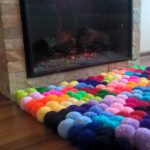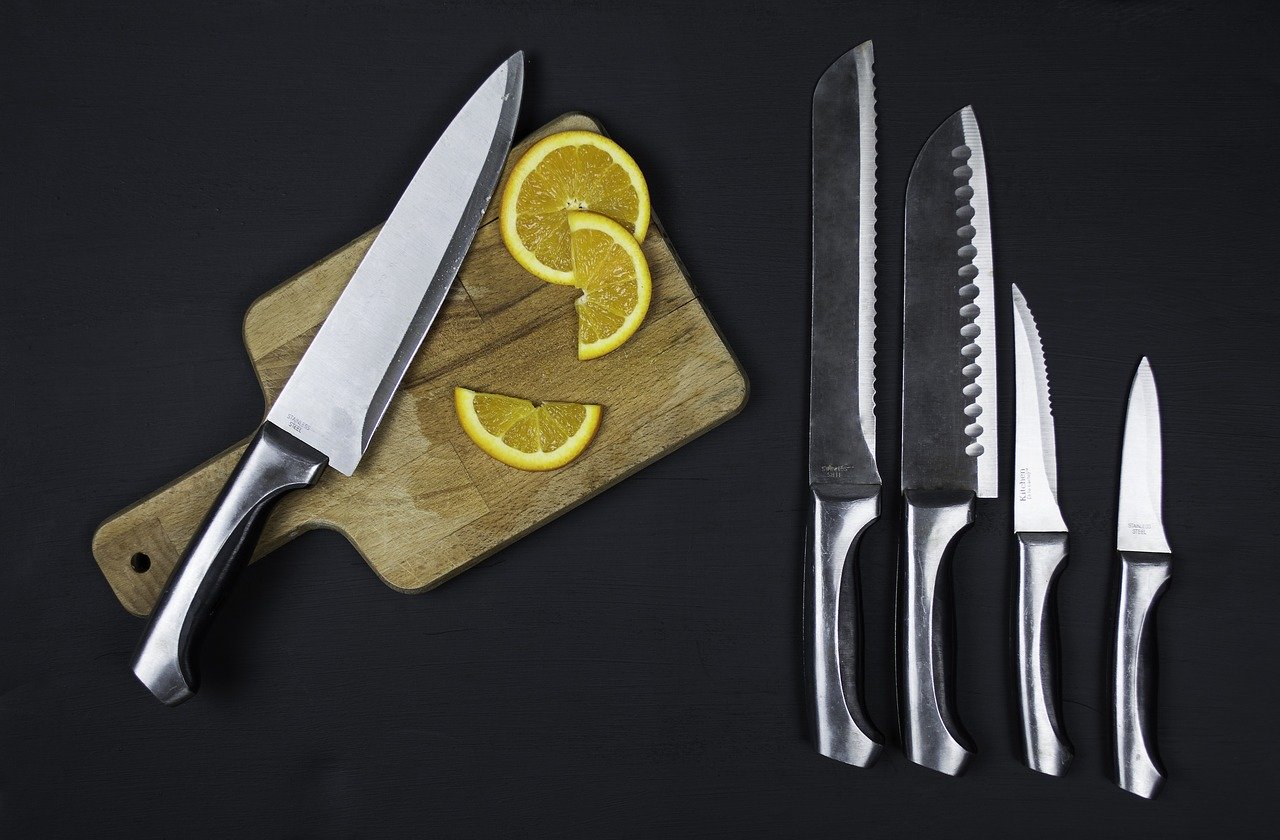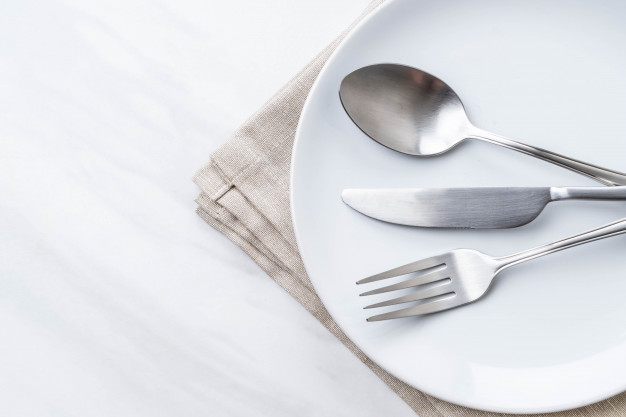When a man is in the house. How to make a knife with your own hands
A knife is a useful thing on the farm. There seem to be no problems with purchasing it - choose one to suit every taste. But that’s bad luck - it’s quite possible to buy a low-quality product instead of a normal one, even after shelling out a good amount of money. After the first open can, dents will appear on it. In a word, fortune is some kind of lottery. What you need is a good knife. What to do in this case? The answer is obvious - that’s what needs to be done. How and from what – let’s decide now.
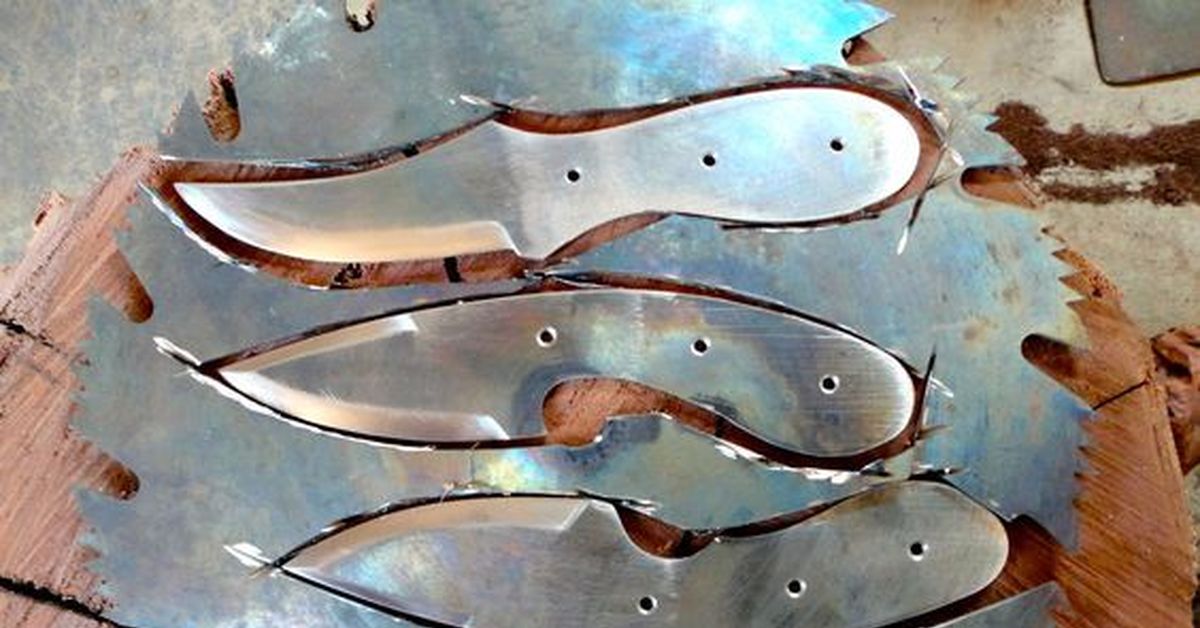
The content of the article
Should I do it myself and why?
It’s definitely worth trying to make a knife yourself for a number of reasons:
- Firstly, you alone know what design and size the product should have, and what you are going to do with it.
- Secondly, you can select the material yourself, using tool or spring steel, and then not worry about what the manufacturers say. Such a knife will not let you down at the most crucial moment.
- And thirdly, by tinkering with manufacturing, you can gain useful experience working with metal.

If the item turns out well, you can always proudly tell your friends: “Check it out, I made it myself!”
Properties of steel depending on the purpose of the knife
There are a great many designs and shapes, but it is not only the shape of the blade or the size that makes this knife a hunting knife, and that one a kitchen knife. Everything is a little more complicated - for any type of activity there are certain requirements.So, in order:
- For hunting knives the main criteria are the hardness and ability of the blade to maintain an edge for a long time. If the steel is too soft, it may well chip on the bone when cutting. Although the blade is wear-resistant and hard, this same property makes it brittle.
- Tourist knife meets other objectives. This is already a multifunctional tool, sometimes used instead of an ax. Although it is made of hard steel, it should not be brittle, since such a tool will be used to open cans, chop wood, and chop branches. The spine of tourist knives is usually wide and massive.
- Survival knife similar to a tourist blade, but for the sake of versatility, manufacturers often reduce the weight of the blade, the width of the butt, and the overall dimensions of the product. It's best to have the tools offered in a survival kit separately, along with a good camping knife.
- Kitchen knives, in a good way, are made from the same material as hunting ones, but their blade may be narrower and thinner. Well, the dimensions are smaller. But regarding the hardness and toughness of steel, the requirements remain the same.
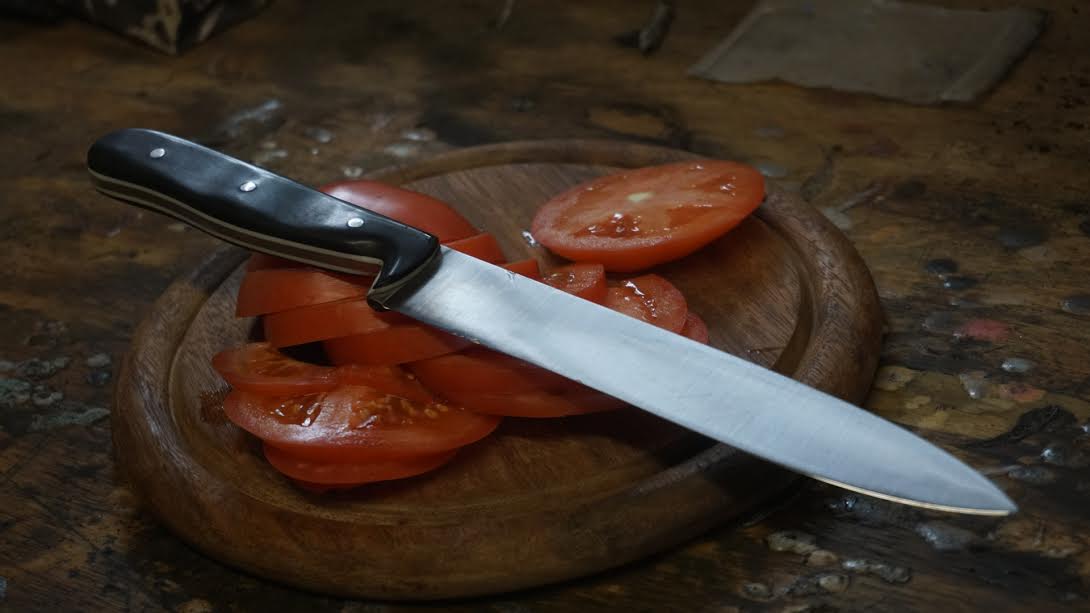
If someone expects to make a universal knife for all occasions, quickly throw this idea out of your head. It doesn't happen that way. When choosing a material, you have to sacrifice some characteristics for the sake of others. There is only one option - to have several knives for different purposes.
Which steel to choose
I can already hear the comments - damask, damask. Yes, it’s a cool option, we just have to remember that not every experienced blacksmith is able to make it. And if you buy a blank, the cost of the product increases unjustifiably. The result will be some kind of museum exhibit, and not a tool for everyday use.
Suitable for our purposes instrumental or spring steel. I won’t bore the reader with a comparison of different brands. If interested, open specialized literature. I will list the most popular steel grades:
- 9X18;
- 50Х14МФ;
- X12MF;
- CHVG;
- 50HGA;
- 40Х13.
I think this list is enough. If you find something from the list, half the battle is already done.
Sequence of actions
The knife manufacturing process can be divided into the following stages:
- Making a template. First of all, a sketch is made on paper, after which the image is transferred to thick cardboard, hardboard or something similar. I especially recommend asking yourself this question if you plan to make several identical products. There is no need to reinvent the wheel - the Internet is literally littered with the most ornate sketches and drawings, many of them are quite good.
- Purchase (manufacture) of workpieces. For example, an old Soviet file or a fragment of a saw blade is taken, and the image from the template is transferred to them. You can purchase a ready-made strip of steel, most importantly, of appropriate quality.
- Giving the workpiece the appropriate shape by milling or on a grinding machine. If you have to perform molding on a grinding machine, the task becomes much more complicated: it is quite difficult to maintain the geometry of the product.
- Heat treatment. Here, without a good specialist or reference literature, you can “flail the entire sowing season.” We will go over this topic separately. Heat treatment includes annealing, hardening and tempering of the metal.
- Making the guard, handle and pommel of a knife depending on its design.
- Follow-up assembling the resulting structure, sharpening and polishing the knife, with testing it in action.
About annealing, hardening and tempering
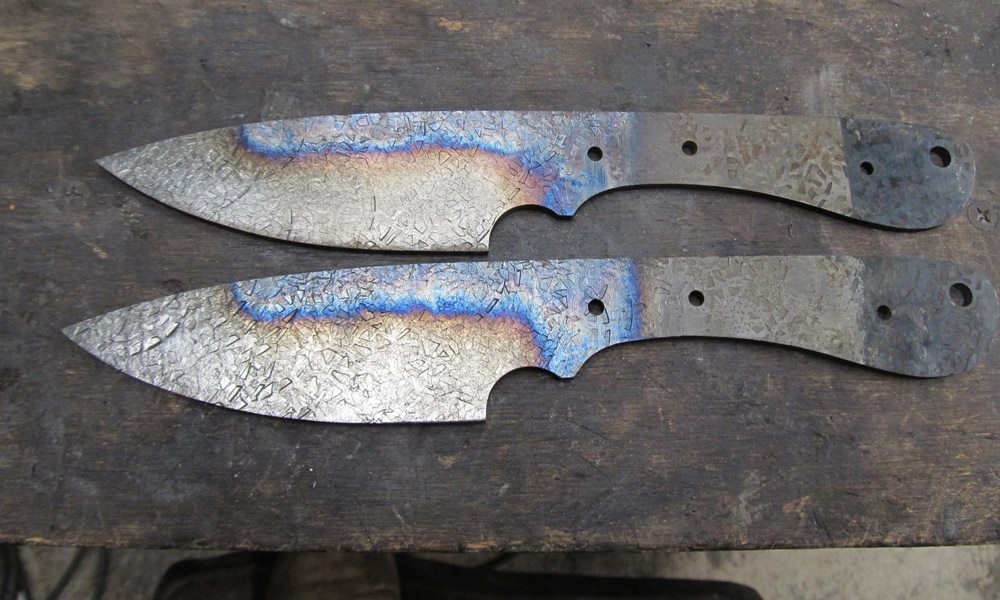
In general, a lot of good books have been written on this technology.I’ll try to explain the essence of the process with my fingers.
If the steel chosen for the blade is difficult to process, it needs to be processedjig before work. The essence of the process is to uniformly heat the workpiece in a forge to a state where the steel stops reacting to the magnet. After this, let it cool slowly. And then they are processed on a machine.
The essence hardening - in sudden cooling of a hot workpiece. Just as with annealing, the metal is heated to a state where it is not magnetic and kept on fire for about five minutes. Then cooled by immersion in waste oil. If you don’t want to bother with petroleum products, take, say, olive oil. And keep a fire extinguisher handy.
After hardening, the knife becomes hard, but very fragile. In order to compensate for this deficiency, they carry out vacation metal in the oven. It is heated for a couple of hours to two hundred degrees, after which the workpiece slowly cools down on its own. We can assume that the heat treatment process is completed.
In fact, this process has many subtleties. And here you can’t know them without practice. After several unsuccessful experiments, you will be able to make a knife that you are not ashamed to show to your friends. The main thing is, don’t show it to passers-by for money.



